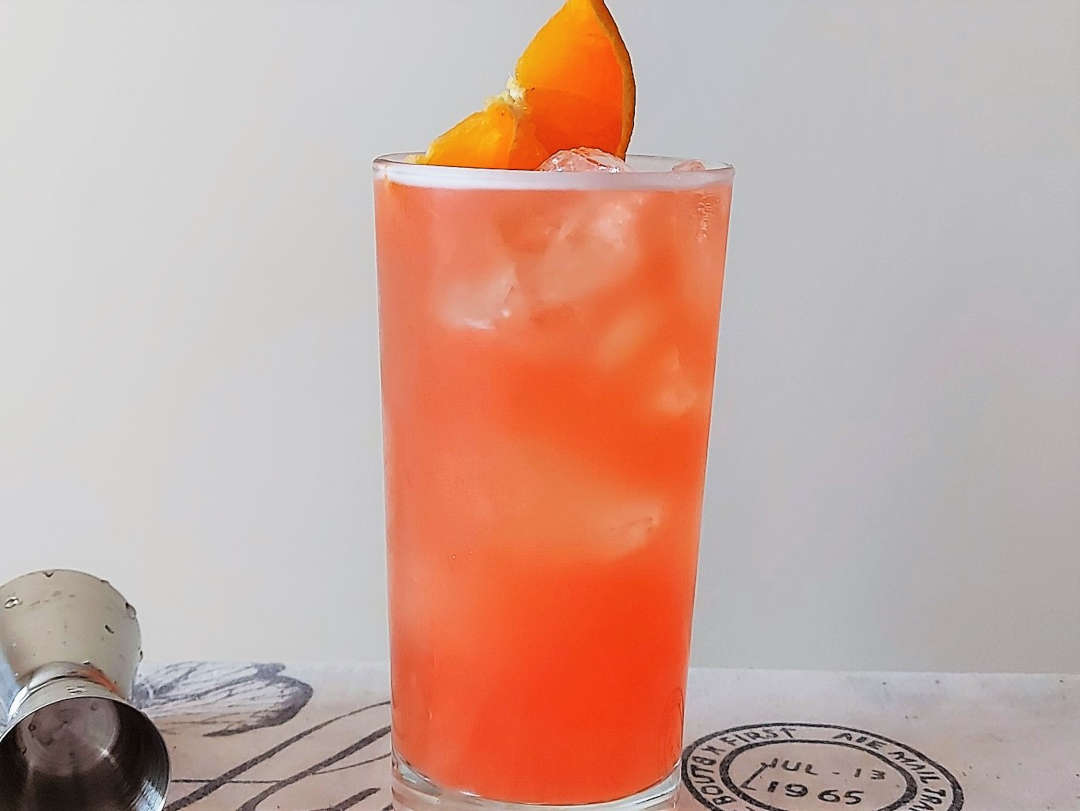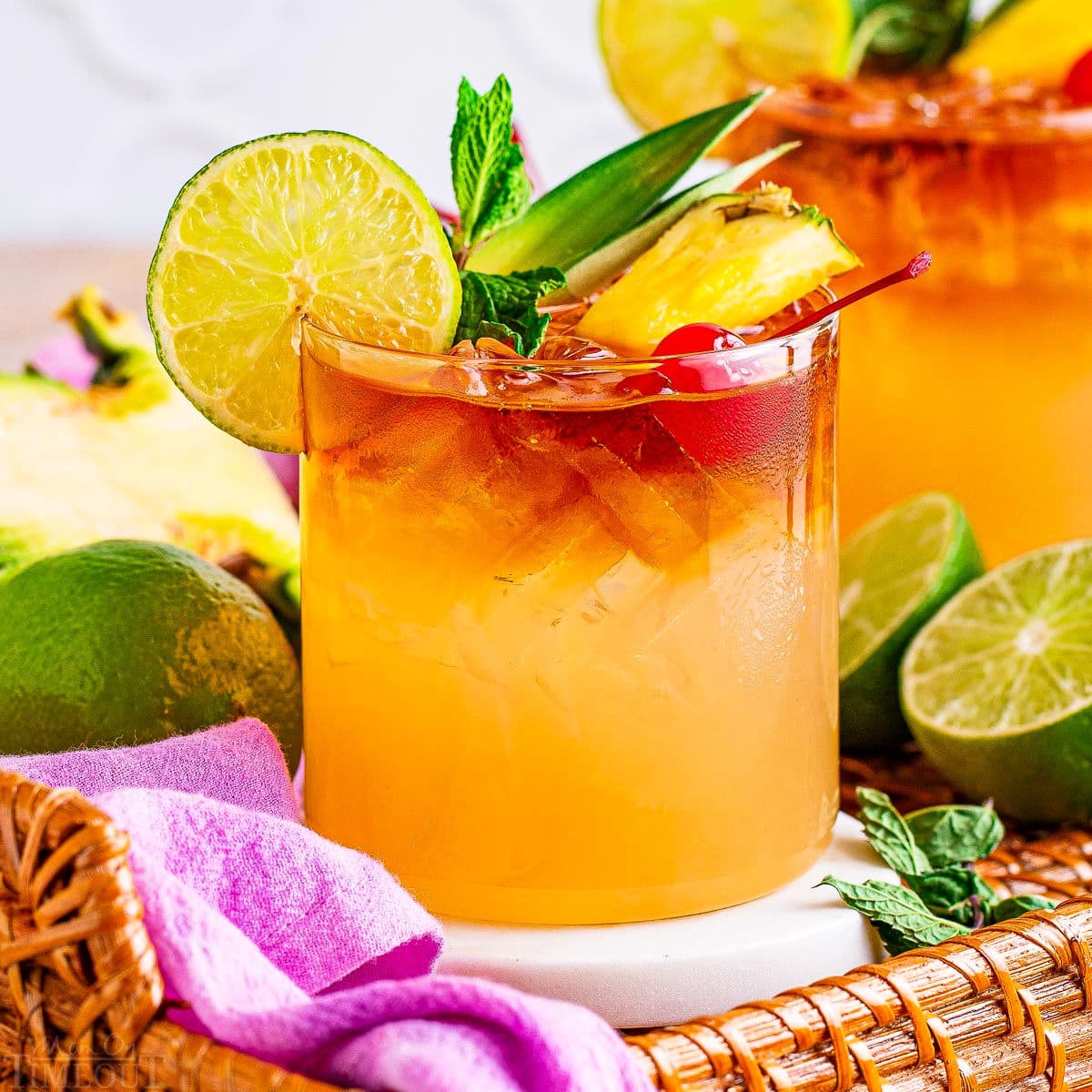Immerse yourself in the vibrant world of mixology as we embark on a journey to craft the iconic Mai Tai cocktail. This tantalizing libation, with its roots in the heart of Polynesia, has captivated taste buds for generations. Let us delve into its history, explore its variations, and unveil the secrets to creating the perfect Mai Tai in the comfort of your own home.
Prepare to be transported to a tropical paradise with every sip as we guide you through the art of crafting this delectable cocktail. From the exotic flavors of orgeat and curaçao to the refreshing blend of lime and pineapple, we’ll unravel the nuances of each ingredient and its contribution to the Mai Tai’s harmonious symphony of flavors.
Ingredients and Measurements
The traditional Mai Tai cocktail consists of the following ingredients:
- 2 ounces light rum
- 1 ounce dark rum
- 1 ounce orange curaçao
- 1 ounce orgeat syrup
- 1/2 ounce fresh lime juice
Garnish
lime wedge and mint sprig
Variations and substitutions:
- Some recipes call for the use of a single type of rum, either light or dark.
- Grand Marnier or Cointreau can be substituted for orange curaçao.
- Simple syrup can be substituted for orgeat syrup.
- Some recipes add a dash of grenadine to the cocktail.
Step-by-Step s

Creating a classic Mai Tai cocktail involves a few key steps. By following these steps carefully, you can craft a well-balanced and flavorful drink.
The process includes shaking and stirring techniques to blend the ingredients seamlessly.
Mixing the Ingredients
In a cocktail shaker filled with ice, combine the following ingredients:
- 1 1/2 ounces light rum
- 1 ounce dark rum
- 1 ounce orange curaçao
- 1 ounce orgeat syrup
- 1/2 ounce fresh lime juice
Shaking and Stirring
Shake the cocktail shaker vigorously for about 10 seconds, or until the ingredients are well combined and chilled.
Strain the mixture into a chilled coupe glass filled with fresh ice.
Garnish
Garnish the Mai Tai with a lime wedge and a sprig of fresh mint.
Garnishes and Presentation
The traditional garnishes for a Mai Tai cocktail are a pineapple wedge and a maraschino cherry. The pineapple wedge is typically cut into a triangle and placed on the rim of the glass. The maraschino cherry is placed on top of the pineapple wedge.
To prepare the pineapple wedge, simply cut a thin slice from the center of a pineapple and cut it into a triangle. To prepare the maraschino cherry, simply remove it from the jar and drain it on a paper towel.
For a visually appealing presentation, place the pineapple wedge and maraschino cherry on a cocktail pick and insert it into the side of the glass. You can also add a straw to the glass for easy sipping.
Tips for Creating a Visually Appealing Presentation
- Use fresh, ripe pineapple for the wedge.
- Cut the pineapple wedge into a clean, sharp triangle.
- Place the pineapple wedge and maraschino cherry on a cocktail pick at a slight angle.
- Add a straw to the glass for easy sipping.
History and Cultural Significance

The Mai Tai cocktail originated in 1944 at Trader Vic’s restaurant in Oakland, California. It was created by Victor J. Bergeron, also known as Trader Vic, who blended various spirits and juices to impress a Tahitian friend. The drink quickly gained popularity, becoming a symbol of the Polynesian pop culture craze that swept the United States in the mid-20th century.
Popularity and Cultural Impact
The Mai Tai’s popularity soared during the post-World War II era, as Americans embraced the exotic flavors and escapist imagery of the Pacific islands. It became a staple of tiki bars and Polynesian-themed parties, embodying the carefree and adventurous spirit of the time.
The drink’s popularity has endured over the years, remaining a classic cocktail enjoyed by many.
Variations and Adaptations
The Mai Tai has inspired numerous variations and adaptations over the years, each offering a unique twist on the classic recipe. These variations often explore different flavor profiles, experiment with new ingredients, or cater to specific preferences.
Tiki Variations
The Tiki culture played a significant role in popularizing the Mai Tai and fostering its variations. Tiki-themed bars often introduced their own versions, incorporating exotic ingredients like passion fruit, guava, or pineapple. These variations emphasized vibrant colors, tropical flavors, and elaborate garnishes.
Modern Adaptations
Contemporary mixologists continue to experiment with the Mai Tai, creating modern adaptations that reflect current trends and techniques. Some variations use sous vide infusion to enhance the flavors of the rum, while others incorporate molecular gastronomy techniques to create innovative presentations.
Low-ABV Variations
In response to the growing demand for lower-alcohol cocktails, bartenders have developed low-ABV variations of the Mai Tai. These versions typically reduce the amount of rum or substitute it with non-alcoholic spirits, maintaining the essence of the cocktail while offering a lighter option.
Personalizations
Individuals may also customize the Mai Tai to suit their personal preferences. Some variations include adding extra lime juice for a more tart flavor, reducing the sweetness by using less orgeat, or experimenting with different types of rum to create a distinct character.
Tips and Troubleshooting
Mastering the art of crafting a flawless Mai Tai requires attention to detail and an understanding of common pitfalls. Here are some invaluable tips and troubleshooting advice to elevate your cocktail-making experience.
Perfect Balance
The key to a harmonious Mai Tai lies in achieving a delicate balance of flavors. Use fresh, high-quality ingredients and pay close attention to the ratios. Overpowering any one ingredient can throw off the entire concoction.
Avoid Over-Shaking
While vigorous shaking is essential for proper aeration and dilution, overdoing it can result in a cloudy, watered-down Mai Tai. Shake the cocktail vigorously for about 10-12 seconds, or until chilled and slightly frothy.
Crushed vs. Cubed Ice
Crushed ice melts faster than cubed ice, which can dilute the cocktail more quickly. For a slower dilution rate and a more authentic presentation, opt for large cubed ice.
Troubleshooting Cloudy Cocktail
If your Mai Tai appears cloudy, it may be due to over-shaking or using crushed ice. Ensure you shake the cocktail for the recommended time and use large cubed ice to minimize dilution.
Final Thoughts
As we bid farewell to our exploration of the Mai Tai, let its spirit continue to inspire your culinary adventures. Whether you prefer the traditional recipe or venture into the realm of variations, may each sip transport you to a tropical oasis.
Remember, the true essence of the Mai Tai lies not only in its exquisite taste but also in the convivial moments it creates when shared with loved ones. So raise a glass and embrace the Mai Tai’s allure, for it is a timeless classic that will forever hold a special place in the hearts of cocktail enthusiasts.
FAQ Summary
Can I substitute dark rum for light rum in a Mai Tai?
Yes, you can use dark rum instead of light rum. However, keep in mind that dark rum will impart a richer, more robust flavor to the cocktail.
What is the origin of the Mai Tai cocktail?
The Mai Tai was created in 1944 by Victor Bergeron, a bartender at Trader Vic’s in Oakland, California.
How do I garnish a Mai Tai?
Traditionally, a Mai Tai is garnished with a pineapple wedge and a maraschino cherry. You can also add a mint sprig for an extra touch of freshness.
What is the difference between a Mai Tai and a Zombie?
A Zombie is similar to a Mai Tai, but it contains more rum and less fruit juice. It is also typically served in a larger glass.
What is the best way to store a Mai Tai?
Mai Tais should be stored in a refrigerator for up to 3 days.
